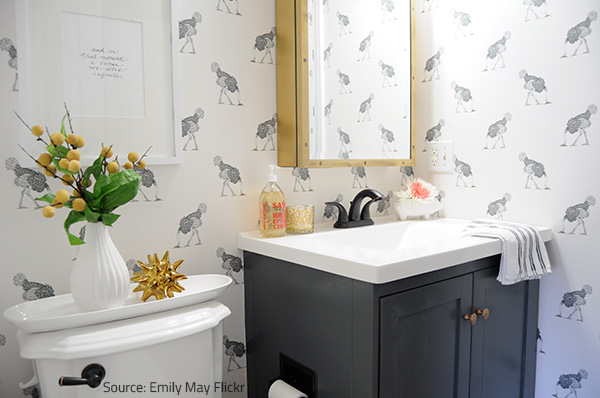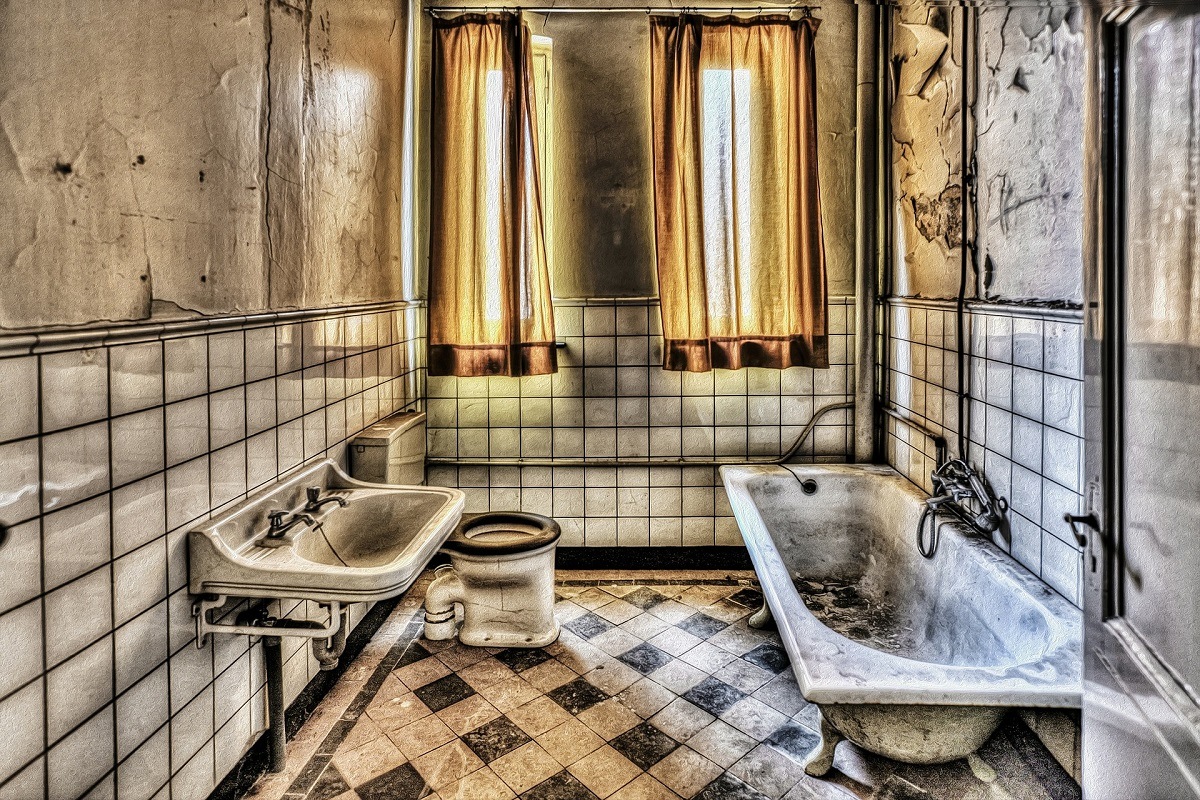What Causes Water Damage in the Bathroom
What Causes Water Damage in the Bathroom
Blog Article
What're your insights and beliefs about How to Repair and Prevent Bathroom Water Damage??

Water damage often takes place in the restroom due to the water made use of everyday. Sometimes, the damages could be a little mold and mildew from the shower. Other times, it's substantial damage on your flooring. Whatever it is, it is always great to know the reason and avoid it prior to it happens.
This guide will certainly go through several of the common root causes of water damage in the washroom. We will likewise analyze what you can do to avoid these reasons from damaging your washroom. Let's dive in.
5 Typical Sources Of Water Damage in Restrooms
These are the usual factors you would have water damage in your restrooms as well as exactly how you can identify them:
Burst or Dripping Pipes
There are several pipes lugging water to various parts of your restroom. Some pipes take water to the bathroom, the sink, the faucets, the shower, and lots of other locations. They crisscross the small area of the washroom.
From time to time, these pipelines can get rustic as well as ruptured. Other times, human action might create them to leak. When this occurs, you'll locate water in the edges of your bathroom or on the wall.
To identify this, keep an eye out for bubbling walls, molds, or mildew. Call a specialist emergency situation plumber to fix this when it occurs.
Cracks in your wall surface floor tilesv
Washroom wall tiles have been particularly developed for that function. They shield the wall surface from moisture from people taking showers. Nevertheless, they are not indestructible.
In some cases, your shower room wall surface floor tiles split and also allow some dampness to permeate right into the wall. This could potentially destroy the wall if you don't take any action. If you discover a fracture on your wall ceramic tiles, repair it promptly. Don't wait until it destroys your wall.
Overruning commodes and also sinks
As people, sometimes we make blunders that could cause some water damage in the restroom. As an example, leaving your sink faucet on can create overruning and also damages to other parts of the restroom with moisture.
Also, a faulty toilet can cause overruning. For example, a damaged bathroom deal with or other parts of the cistern. When this takes place, it could damage the floor.
As soon as you discover an overruning sink or bathroom, call a plumbing to aid take care of it instantly.
Roof Leaks
In some cases, the trouble of water damage to the shower room could not originate from the bathroom. For instance, a roofing system leak can trigger damage to the bathroom ceiling. You can spot the damages done by checking out the water stains on the ceiling.
If you locate water discolorations on your ceiling, inspect the roof to see if it's harmed. After that, call an expert to help address the problem.
Excess Moisture
It's cool to have that lengthy shower as well as splash water while you hem and haw as well as act like you're performing, yet in some cases these acts could create water damage to your restroom.
Spraying water around can trigger water to go to edges as well as form mold and mildews. View how you spread out excess moisture around, and also when you do it, clean it up to avoid damages.
Conclusion
Water damage to your washroom can be frustrating. Nevertheless, you can manage it if you stop some of the reasons pointed out in this guide. Call a specialist emergency plumber if you see any type of severe damages.
How to Repair a Water-Damaged Wall in the Bathroom
All you need to know to repair bathroom wall water damage – from identifying the water source to finishing the repair professionally. If you don’t act quickly to resolve a water damage problem, you could find that it develops into a mold issue and/or cause structural damage to your home. Follow this guide to repair your bathroom before it's too late.
All you need to know to repair bathroom wall water damage
Water damage is a common household problem, and one that, if left unrepaired, can quickly lead to structural problems and health issues. The two most likely rooms where water damage may occur is the bathroom and the kitchen – where water is used often and there is high humidity.
What is water damage?
It is easy to think of water damage as caused by a flood or leaking tap or burst water pipe. However, when water damage is assessed, there are three main categories into which water falls (as classified by the American National Standards Institute). These categories are defined as:
Category 1 Water – ‘Clear Water’
This is sanitary water. There is usually no major threat to health by washing with this water, drinking it, or inhaling if it is streaming. Most water that enters your home will be category 1 water, while most water leaving your home will be either category 2 or 3 water. It may also come from melting snow, rainwater and water tanks.
Damage caused by this type of water can usually be repaired or restored, though this doesn’t mean that there are no potential health issues.
Category 2 Water – ‘Grey Water’
This is contaminated water – sometimes considerably so – and will cause illness if consumed or if it comes into contact with your skin. Water damage in this category is often caused by overflows from toilet bowls, and damage to washing machines and dishwashers. While damaged items might still be repaired or restored after damage by grey water, it is more difficult and more expensive to do so.
If the water damage in your home has been caused by grey water, it is advisable to have repairs made by professionals.
Over time, grey water will deteriorate and become black water.
Category 3 Water – ‘Black Water’
Category 3 water, also known as black water, is highly contaminated and a great risk to health. This may contain raw sewage, heavy metals, and other toxic substances. It will smell terrible.
If this is the water that has caused damage in your bathroom, do not touch it. Stop the water flowing if possible, seal the room and call the experts: it really isn’t worth the risk of ill health and disease that could be fatal. It is very unlikely that items can be repaired or restored if they have been damaged by black water.
https://www.porterscleaning.com/blog/how-to-repair-a-water-damaged-wall-in-the-bathroom/

How to Repair a Water-Damaged Wall in the Bathroom
All you need to know to repair bathroom wall water damage – from identifying the water source to finishing the repair professionally. If you don’t act quickly to resolve a water damage problem, you could find that it develops into a mold issue and/or cause structural damage to your home. Follow this guide to repair your bathroom before it's too late.
All you need to know to repair bathroom wall water damage
Water damage is a common household problem, and one that, if left unrepaired, can quickly lead to structural problems and health issues. The two most likely rooms where water damage may occur is the bathroom and the kitchen – where water is used often and there is high humidity.
What is water damage?
It is easy to think of water damage as caused by a flood or leaking tap or burst water pipe. However, when water damage is assessed, there are three main categories into which water falls (as classified by the American National Standards Institute). These categories are defined as:
Category 1 Water – ‘Clear Water’
This is sanitary water. There is usually no major threat to health by washing with this water, drinking it, or inhaling if it is streaming. Most water that enters your home will be category 1 water, while most water leaving your home will be either category 2 or 3 water. It may also come from melting snow, rainwater and water tanks.
Damage caused by this type of water can usually be repaired or restored, though this doesn’t mean that there are no potential health issues.
Category 2 Water – ‘Grey Water’
This is contaminated water – sometimes considerably so – and will cause illness if consumed or if it comes into contact with your skin. Water damage in this category is often caused by overflows from toilet bowls, and damage to washing machines and dishwashers. While damaged items might still be repaired or restored after damage by grey water, it is more difficult and more expensive to do so.
If the water damage in your home has been caused by grey water, it is advisable to have repairs made by professionals.
Over time, grey water will deteriorate and become black water.
Category 3 Water – ‘Black Water’
Category 3 water, also known as black water, is highly contaminated and a great risk to health. This may contain raw sewage, heavy metals, and other toxic substances. It will smell terrible.
If this is the water that has caused damage in your bathroom, do not touch it. Stop the water flowing if possible, seal the room and call the experts: it really isn’t worth the risk of ill health and disease that could be fatal. It is very unlikely that items can be repaired or restored if they have been damaged by black water.
https://www.porterscleaning.com/blog/how-to-repair-a-water-damaged-wall-in-the-bathroom/
As a passionate person who reads about How to Repair and Prevent Bathroom Water Damage?, I think sharing that blog post was sensible. Sharing is caring. Helping people is fun. Many thanks for taking the time to read it.
Book A Free Estimate Report this page